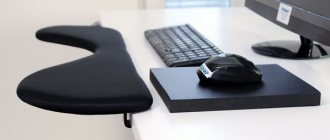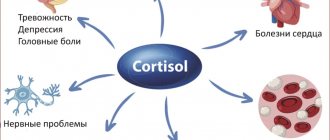Diagnostic procedures
Ultrasound and MRI are the two imaging modalities that are best suited for investigating compression syndromes. Along with direct visualization of direct causes and anatomical variations, recognition of pathological MRI patterns from muscles can indicate the affected nerve.
Electromyography and nerve conduction studies are the basis for the diagnosis of CTS. Other clinical or special tests do not confirm CTS, but help rule out other diseases. These results may prompt electromyography and nerve conduction studies. X-rays are recommended to rule out other causes of wrist pain, such as arthritis or bone pathology.
Rating scales
There are several questionnaires available to measure outcome measures in CTS.
- Boston CTS Severity Questionnaire (BCTQ).
- Disability of the Arm, Shoulder, and Hand (DASH) Questionnaire.
- Brigham and Women's Clinic Questionnaire.
- Patient Evaluation Scale (PEM). This is a self-administered, interview, or telephone questionnaire to assess physical health. It consists of 3 components (patient perception of care, hand health profile, global assessment) and a total of 18 items scored on a 7-point scale. Low scores indicate positive results. Hobby et al. found the instrument to be valid and reliable and to have good sensitivity.
Clinical picture
The onset of the disease is usually gradual with tingling or numbness in the area of innervation of the median nerve. Patients may notice an exacerbation of symptoms when statically grasping objects such as a telephone or steering wheel, or at night or in the early morning. Many patients report improvement in symptoms after shaking or flapping their hands.
As the disease progresses, the tingling or numbness sensation may become constant and patients may complain of a burning pain. The final symptoms are weakness and atrophy of the thenar muscles. These combined symptoms of sensory impairment and weakness can lead to complaints of clumsiness and loss of grip strength, resulting in things falling.
Who is at greater risk of developing carpal tunnel syndrome?
The first people at risk of developing carpal tunnel syndrome are representatives of professions associated with long-term forced fixed hand positions and monotonous movements. Previously, milkmaids and seamstresses used to get sick in their wrist joints, but when cows began to be milked using machines, and the sewing industry was modernized, the problem of sore wrists became less relevant for them. Today, carpal tunnel syndrome is a distinctive feature of white-collar workers who work in offices using a computer. Professional musicians - guitarists, pianists, drummers - still often get sick.
People with a so-called square wrist are predisposed to carpal tunnel syndrome - when it is about the same size from the side as from the back and inside. Those with thin and graceful wrists get sick less often.
Therapy with folk remedies
Treatment of carpal syndrome with folk remedies at home is aimed at eliminating all the unpleasant symptoms of the disease.
Sea buckthorn infusion
Sea buckthorn berries are mixed with water. Then the resulting mixture is heated to 37 degrees. You should steam your hands in the resulting mixture for 30 minutes.
After the procedure, dry your hands thoroughly and put on warm mittens. Brushes should be treated in this way for a month, then take a break for a couple of weeks.
Traditional treatment of carpal syndrome
Ammonia and alcohol
A tablespoon of salt is poured with 50 grams of 10% ammonia and 10 grams of camphor alcohol are added. Everything is dissolved in a liter of water. The resulting product is rubbed on sore limbs or used in the form of baths. The product will help get rid of numbness in your fingers and the feeling of goosebumps.
Pepper rub
Pour 100 grams of ground black pepper into a liter of vegetable oil and heat for half an hour over low heat. The warm product is rubbed into the sore hand several times a day.
Pathophysiology
There is a wide range of causative pathologies converging on two disease mechanisms, both of which lead to compression.
Reduced carpal tunnel size is caused by conditions such as:
- overuse injury (considered the most common association) or simply injury;
- osteoarthritis;
- acromegaly.
You can read about wrist sprains here.
Pathological conditions leading to an increase in the contents of the carpal tunnel:
- masses, eg ganglion cysts, primary nerve sheath tumors.
- deposition of foreign material, such as amyloid;
- hypertrophy of the synovial membrane in rheumatoid arthritis.
In general, the pathophysiology of CTS results from a combination of compression and traction mechanisms.
- The compression element of the pathophysiology includes a pathological cycle of increased pressure, difficulty in general venous outflow, increased local edema and disruption of the intraneural microcirculation of the median nerve. Nerve dysfunction increases, and disruption of the structural integrity of the nerve itself further propagates the dysfunctional environment—the myelin sheath and axon accumulate damage, and the surrounding connective tissue becomes inflamed and loses its normal physiological protective and supportive function.
- Repetitive traction and movement of the wrist aggravates the negative effects of surrounding structures, further damaging the nerve. Additionally, any of the nine flexor tendons that pass through the carpal tunnel can become inflamed and put pressure on the median nerve.
Idiopathic carpal tunnel syndrome
- Idiopathic cases are more common in women (65-80%) aged 40 to 60 years; in 50-60% of cases the lesion is bilateral.
- The risk of bilateral involvement increases with the duration of symptoms.
- Idiopathic CTS correlates with hypertrophy of the flexor tendon synovium caused by connective tissue degeneration, as well as vascular sclerosis, edema, and collagen fragmentation. Histologic changes were thought to be suggestive of dynamic factors such as repetitive motion.
Types
There are over thirty types of carpal tunnel syndrome, the most widespread of which include:
- carpal;
- cubital;
- elbow;
- peroneal;
- tarsal.
Typically, people suffer from carpal tunnel syndrome (approximately 15% of the population). The upper extremities are more likely to be affected by the disease than the lower extremities. Cases of tunnel neuropathy of the trunk are quite rare.
symptoms of carpal tunnel syndrome
Diagnostics
The diagnosis of carpal tunnel syndrome can be made based on symptoms and characteristic areas of numbness in the hand. But at the same time, it is often necessary to exclude other possible causes of symptoms that simulate carpal tunnel syndrome. This could be a neck, shoulder or elbow problem. The doctor examines the wrist to detect swelling, local fever, pain, and discoloration. Sometimes pressing on the front of the wrist can produce a tingling sensation in the hand and this is called the Tinel sign, characteristic of carpal tunnel syndrome. Symptoms may also occasionally be reproduced by flexing the wrist forward (called Phalen's sign). A definitive diagnosis can be made with ENMG. Typically, with carpal tunnel syndrome, there is a slowdown in nerve impulse transmission after the nerve passes through the wrist.
Extremity muscle testing, an electromyogram, is sometimes performed to rule out or detect other conditions that may mimic carpal tunnel syndrome.
Laboratory tests may be performed to help diagnose conditions associated with carpal tunnel syndrome. These tests include thyroid hormone analysis, general blood tests, blood sugar levels, etc. X-rays of the hand may also be ordered to determine the presence of bone changes (abnormalities of the bones and joints of the wrist). MRI is necessary in cases where it is necessary to visualize changes in ligaments and cartilage.
Tests to help you figure out if you have carpal tunnel syndrome
There are several diagnostic tests that can help you suspect your symptoms are due to nerve damage. If at least one of them is positive, this is a reason to consult a doctor.
Tinel test
Tap your fingers on the palmar surface of the wrist above where the median nerve passes through the carpal tunnel. If tingling, numbness, and pain occur in the areas for which the median nerve is responsible (fingers I-IV), you most likely have carpal tunnel syndrome.
How to do the Tinel test
Phalen test (or Prayer test)
Place your palms at chest level, as if praying. Smoothly lower your joined palms to the maximum lower position. Hold them in this position for at least one minute. In a person without carpal tunnel syndrome, pain and sensory disturbances (pins and needles, numbness, burning) appear no earlier than one minute.
Cuff test
Place the blood pressure cuff on your forearm and inflate it as much as possible. If the result is positive, unpleasant sensations will appear within 30-40 seconds.
In later stages, muscle weakness of the hand develops and fine motor skills are impaired. For example, it becomes impossible to fasten buttons or tie shoelaces. The function of grasping and holding objects with your hand weakens.
Bottle test
Lift the bottle filled with water by the neck using your thumb and index finger. If the bottle is difficult to hold and slips out, this indicates motor disorders in the muscles innervated by the median nerve. This test will be positive in the later stages of carpal tunnel syndrome.
What is important to remember
Similar symptoms in the hands can be manifestations of other diseases. If you receive a positive result on any of the tests, consult a neurologist.
There is usually no difficulty in making an accurate diagnosis, but additional tests may be needed to rule out other possible causes of symptoms. Further treatment can be carried out by a neurologist, chiropractor, osteopath, surgeon or other specialists.







